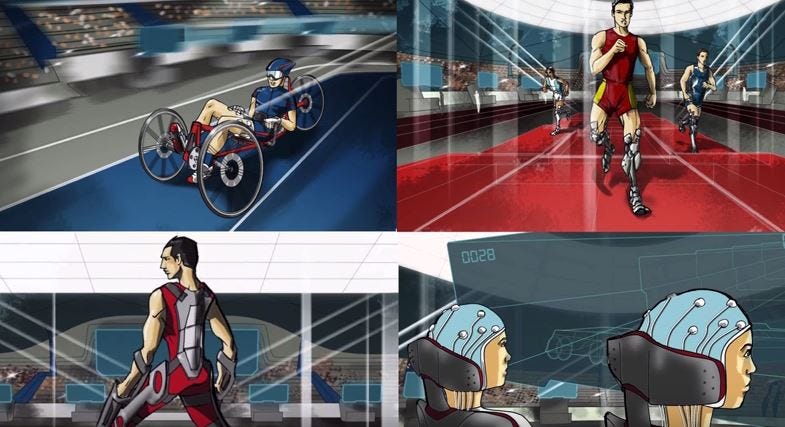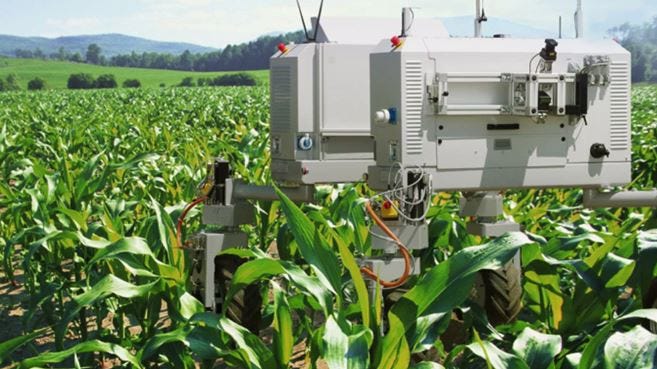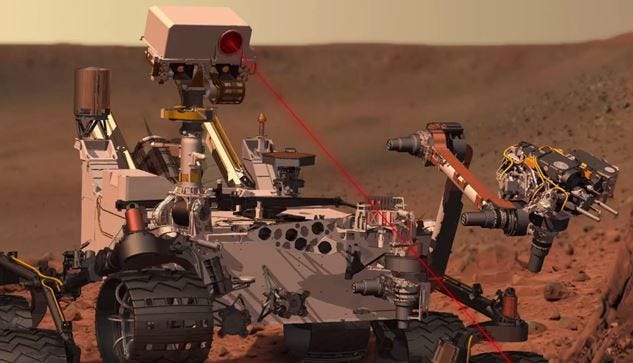Popping the AI and Robotics Hype Bubble
Popping the AI and Robotics Hype Bubble
- Last Updated: December 2, 2024
Karen Lewis
- Last Updated: December 2, 2024



As a member of the Royal Society’s Working Group on Machine Learning, Dr. Hauert is an expert in science communication. As a frequent speaker on the future of robotics, Hauert explains how robots are game-changers, but not in the way we think.
How and Where Can Robots Assist People?
Robots aren't going to replace humans; they're going to make our jobs much more humane. Difficult, demeaning, demanding, dangerous, dull—these are the jobs that robots will be taking.
Productivity is one of the primary benefits of robotics in the workplace. In Europe, the goal is to attain a 20 percent increase in productivity by 2020. Central to achieving this is the exploration and use of robotics in the workplace.
Autonomous Cars
Fact: There are 1.25 million deaths caused by automobile accidents every year.
We spend approximately 200 hours a year behind the wheel of an automobile. Autonomous cars could give us back this time while being safer and greener. Autonomous vehicles can also be empowering for millions of people who can’t drive today.
Health and Well-Being
Fact: One in four people will be disabled by the time they reach retirement.
Robotics, prosthetics and exoskeletons can provide technology that can restore freedom to people who now experience limitations due to age or disability. But, helping disabled people through technology is not about removing the human element.
Hauert often polls her audience to gauge how they feel about the future of robotics:
“How many of you would want a robot to take care of you as you grow old?”
For most people, the answer is no.
“How many people would be okay with a robot helping them to get out of a chair, get into bed, go to the toilet, or fetch a glass of water?”
Hmm—a lot more of the audience say, yes.
Elderly care and aging is a global issue we're all going to experience, and we'll need help. Robotics is one solution which can be used to help alleviate the burden of care as our longevity continues to increase.
If robots can help individuals with the day to day tasks, this leaves more time for doctors, family and caretakers to participate in other more meaningful endeavors—the things they care about, and which they're more competent—the discussions, the conversations, the human contact and the act of caring. In this setting, the robots enable the elderly or disabled to enjoy the things they want to do—in either their own homes or assisted care facilities.
Empowering People With Disabilities
The use of technology in humans is not about creating superhumans; it’s about empowering people with disabilities through assistive technology. One example is the Cybathlon, an international competition organized by ETH Zurich for disabled competitors allowed to use bionic assistive technology, such as robotic prostheses, brain-computer interfaces, and powered exoskeletons. The Cybathlon is much more about human achievement than the use of technology for the disabled.

(Cybathlon, an international competition organized by ETH Zurich for disabled competitors.)
The Rise of Cobots
Take the example of a Baxter robot—or a "cobot." A cobot is a collaborative robot designed to work alongside a human. Cobots are designed to be taught to do specific tasks within a company. By taking its arm, and showing it what to do, the cobot puts its human collaborator in a position to teach it skills, to show it how to perform functions, to manage its activities.

It’s an intuitive way of approaching robotics in the workplace, which puts the human worker in a position of responsibility to improve the productivity of that company. You don’t have to be an expert to program a cobot—but you can become a manager by teaching cobots how to assist in specific tasks.
Precision Farming and Agriculture
Fact: The UN predicts 9.1 billion people will live on Earth by 2050.
How is it going to be possible to feed nearly 10 billion people by 2050? Precision robotics used in farming is one way of solving this challenge. Food production and supply is another example where robots can provide valuable assistance.

To a certain extent, precision farming enables farmers to look at how they approach crops in a more personal way—by understanding water and irrigation issues better by using data from soil to understand more accurately how to pinpoint the use of fertilizers and soil additives, or to reduce pesticide use.
Exploration of the Universe
Fact: The most prominent robots in the world are used to milk cows.
Now, dairy farming is not the first thing that comes to mind when most people think about robotics. Maybe that’s because a milking machine is not as sexy as a robot designed to help us explore our universe.

Deep sea and outer space exploration is another area where robots are helping humans to conduct research and explore dangerous or inhospitable environments. Robots offer exciting new ways to explore the earth—in mines and caves, in the deep sea, the air and even outer space.
Designing Swarms That Work in Large Numbers, and at Small Scales
Swarm robotics is a new approach to coordinate the behaviors of a large number of relatively simple robots in a decentralized manner. Taking inspiration from complex behaviors like swarming can help to design technology.
Before joining the University of Bristol, Dr. Hauert engineered swarms of nanoparticles for cancer treatment at MIT and deployed swarms of flying robots at EPFL.
Hauert’s research at the Bristol Robotics Laboratory focuses on understanding and applying the principles of swarming to robotics. By studying starlings, which can create beautiful and intricate patterns, Dr. Hauert can use the principles of swarming to better engineer robots that work in large numbers. Hauert started out designing swarms of robots that could potentially be used to create communication networks in disaster areas. In Bristol, Hauert’s team explores how to design algorithms that work with thousands of robots to search through an environment.
Why Does the Media Insist on Portraying Robots as Scary?
Hauert recounts a story where a news outlet claimed she intended to inject millions of nanoparticles into people. Hauert jokes, “Roboticists are not evil. I am not an evil person. But I am interested in nanoparticles. Nanoparticles number in the trillions.”
Hauert is interested in the use of nanoparticles to treat tumors—specifically how to design these particles to work more efficiently. “When nanoparticles behave the way we want them to behave in a collective, they are more efficient when treating cancer patients,” explains Hauert.

Every green dot in the picture above is nanoparticle under a microscope. This work is what Hauert perceives as being incredibly beneficial to society. Yet, the media doesn’t always portray the work she’s doing in the same way. In this instance, Hauert had to negotiate with the reporter covering the story to change the headline.
Is there a better way to manage the impact of the story if the press is determined to use a clickbait headline? The truth behind the statement lay in Hauert’s interest in and research on the use of nanoparticles in cancer patients. By injecting nanoparticles into cancer tumors, she was working towards a cure.
Another headline flashes up:
Google plans ROBOTS to SLICE YOU OPEN AND CUT YOU UP
Are we astonished to learn that Google plans to slice humans up with robots? The mismatch between the headline and the subject of the article is startling—as the article is really about a surgery robot—something which, if developed, could be extremely helpful to improving surgical techniques and recovery times. But, is the true nature of the story reflected in the headline?
Hauert asks, “Does this happen in other fields? When surgeons develop new techniques, are there headlines which say, ‘Dr. Evil wants to hack off body parts?’ Probably not.” Robotics, more than any other field, seems to be tarnished with the brush of ‘science fiction convergence’ where everything gets related back to the world of mad science fiction.
Scary Headlines Are Clickbait
Headlines are misleading—and don’t do the field of robotics any favors. Many statements and headlines are just click-bait. No doubt, the scary headlines receive more views, but what impact does the use of such inflated comments have on public opinion. Are these types of headlines just perpetuating the stereotypes through misinformation?
To help neutralize these statements effect, Dr. Hauert suggests roboticists need to engage the media actively. “It is the responsibility of the roboticist community to promote better communication with the media by reaching out more frequently with materials that offer balance,” she says. While the roboticist can’t change the behavior of people who are drawn to ‘car crash headlines,’ they can work towards educating the authors of the materials to inform the public better.
Empowering Experts to Become Better Communicators
Robohub.org is a platform that connects the robotics community to the world. Hauert is on a mission to ensure balanced, truthful and fair robotics information is being communicated on a broad basis. The key to de-hyping how robotics is portrayed—especially through mass media outlets—is to empower experts to become better communicators about their work.
“Scientists and field practitioners need to learn how to communicate with a broader set of stakeholders, ” Hauert explains. Rather than communicate in a bubble, Robohub.org is set up as a non-profit that connects roboticists with the public—using tools like blogging, social media, videos and similar channels to gain access to a broad audience.
Moving roboticists outside of their bubble and into the mainstream is the central philosophy behind Robohub.org’s mission to de-hype the mainstream perception about robotics and artificial intelligence.
Will Robotics and Artificial Intelligence Lead to Jobs Being Displaced?
Once again, headlines often paint a dim future where robots will take our jobs and destroy the universe.

Hauert cautions: “Before setting out on a discussion about job displacement, the full picture needs to be explored. Yes, there will be jobs which are displaced. However, there will also be new jobs created.”
A better question to ask is, “What kinds of jobs are likely to be replaced?”
If the answer is the dirty, dull and dangerous jobs, i.e., jobs better suited for industrial robotics, are likely to be displaced, then the issue we should be addressing is not job displacement, but rather how our education and training requirements need to evolve to equip the future needs of a more robot-friendly workforce.
Productivity Improvements Lie at the Heart of Robotics Adoption
Understanding the reason why robots are being used in industries is an excellent place to start. Improving productivity levels is a priority for all organizations. Efficiency gains are driving the use of robotics in industrial environments, factories, routine service environments and manufacturing plants. Using robotics in industrial settings improves productivity. In most instances, an increase in productivity leads to a rise in potential jobs being created within a company—either by fulfilling new roles and tasks required to train and manage a robotic process or by freeing up resources to deliver services or functions which require a different level of human interaction.
When it comes to assessing the long term economic impact of robotics adoption and use, the data isn't yet reliable, it’s just now being created. “We are at the beginning of the cycle—in Europe, for example, there are no benchmarks yet. The clock has just started,” Hauert adds.
To capitalize on the productivity gains of increased robot use, we need to dispel the myths (and mystery) about robotics, advocating for balanced media and communications around robotics and artificial intelligence.
How Human Should Robotic Devices Appear?
Hauert has mixed views about putting faces on robotic devices, saying it depends on what the robotic device is designed to do. “Looking human is a complex process—expressions are hard to imitate,” she adds. For the most part, industrial robots are not human-like. However, in settings where robots need to interact with individuals, having human-like expressions or facial features can be helpful.
Take the example of a robot designed to help children with autism—a robot that can display facial expressions is more likely to connect with the user on a human level. Conversely, a robotic device designed to vacuum carpets doesn't need facial features, as it’s expressions have minimal impact on the task the device is intended to complete.
Advice for Start-Ups Interested in Robotics
It’s a lot harder to design hardware than software. Anything with moving parts and a body, no matter what shape, requires much more research and work than the software side. Hauert emphasizes the growing community of robotics professionals. “There is a robust ecosystem of partners, scientists, think-tanks and legal groups available to provide assistance to budding robotics engineers, designers, and entrepreneurs.”
There are many incubators to help robotics start-ups. Located all over the world, these organizations can assist designers and start-ups with co-production, as well as scaling up. Access to communities of researchers and open-source collaborators, in addition to crowdsourcing platforms, can also help to make the process less daunting. From a financial perspective, the use of crowdfunding platforms like Indiegogo and Kickstarter can help connect investors and backers with entrepreneurs.
Hauert is adamant when she points out the importance of utility. Hauert emphasizes the need to design real products. She explains: “Prototypes often miss the mark when it comes to designing a ‘product’ with a differentiating and useful set of features that make it stand out as a real product. Start-ups should create a product that is also a robot instead of a robot that is not a product.”
Popping the Artificial Intelligence Hype Bubble
What's the prevailing opinion when it comes to robotics? The jury is still out. Yes, the findings from research, studies and interactions can reveal the public’s real perception of AI, machine learning and robotics. However, the accuracy of the information on which they're basing their opinions is disputable.
Fact: Below 10 percent of people know what machine learning is. Yet the majority of people do understand the concept of Natural Language Processing (NLP) and autonomous cars.
How do people know about NLP and autonomous cars? 75 percent have learned about these concepts through mainstream media, while another twenty-one percent attribute their knowledge to entertainment—television, films or books.
Through further investigation, the findings also reveal we have a keen interest in the direction and use of artificial intelligence, robotics and machine learning. For example, many have concerns about safety and trust; can we trust algorithms to work with humans safely?
Yes, people worry about robots replacing jobs, and they express concern about the possibility that robots might replace the human side of caring services.
Furthermore, although the public doesn’t really know if machine learning is good or bad, they're voicing more contextual concerns relating to data. For instance, a common question many people ask is whether there's evidence to suggest
The Most Comprehensive IoT Newsletter for Enterprises
Showcasing the highest-quality content, resources, news, and insights from the world of the Internet of Things. Subscribe to remain informed and up-to-date.
New Podcast Episode

Moving Past the Pilot Phase in IoT and AI
Related Articles





